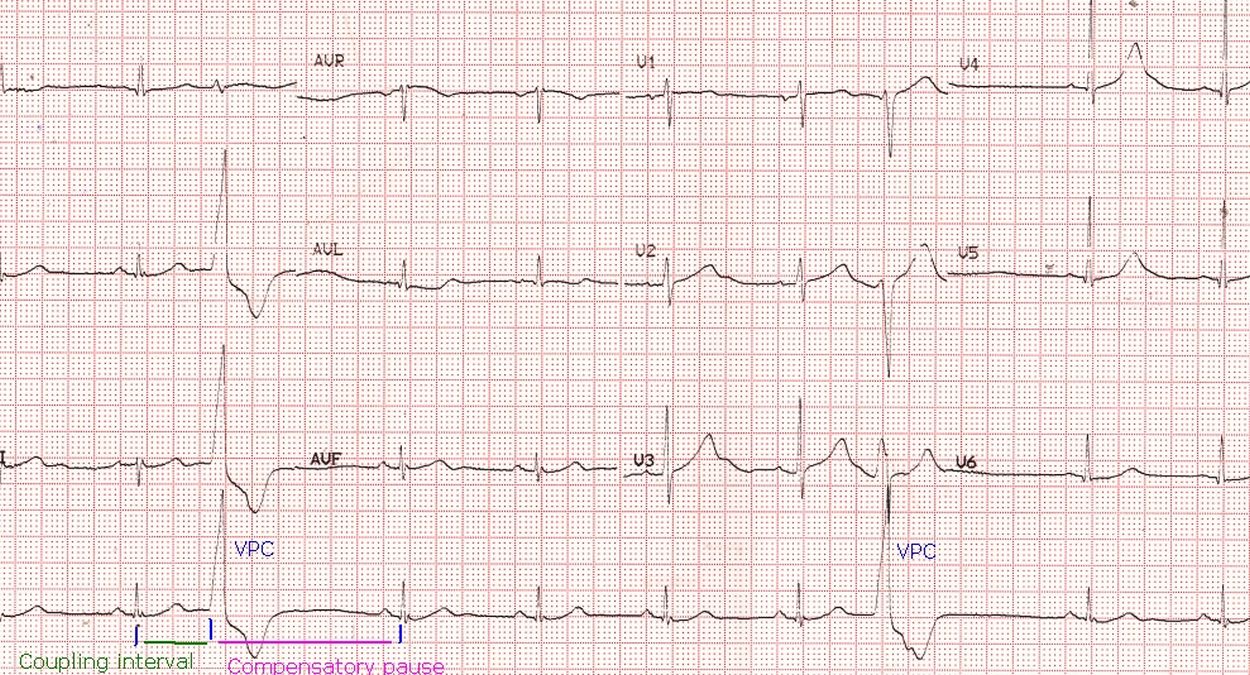Monomorphic ventricular premature complex (VPC)
Monomorphic ventricular premature complex (VPC)
Basic rhythm in the ECG is sinus rhythm at around 60/min. There are two wide QRS complexes seen in lead II rhythm strip. Both of them are of similar morphology, hence they are called monomorphic. Monomorphic VPCs are usually unifocal and have same coupling interval.
Coupling interval is the interval between the onset of the previous normal QRS complex and the ectopic QRS complex. Ventricular ectopic is identified by the absence of preceding P wave, bizarre wide QRS and secondary ST-T changes.
It is usually followed by a full compensatory pause, meaning that the sum of the coupling interval and the compensatory pause will be equal to twice the regular sinus cycle length. Compensatory pause is the interval between the onset of the ventricular ectopic beat and the succeeding sinus beat.
The full compensatory pause is because the ventricular ectopic beat usually does not reset the sinus cycle. This is because the next sinus discharge would have already occurred before the ventricular ectopic impulse gets conducted up through the atrioventricular node with the usual delay.
Have a look at the pulse oximetry tracing in ventricular ectopy here. Pulse oximetry tracing of ventricular premature complex has a lower amplitude than the normal sinus beat and the following beat has a higher amplitude. This is because ventricular filling is poor in a ventricular premature complex as the preceding diastole was short. Next sinus beat is stronger as there is a long diastole during the compensatory pause. This response is known as post ectopic or post extra systolic potentiation.
Post ectopic potentiation has been shown to be a predictor of mortality in post myocardial infarction patients [1]. The authors of the report concluded that post extra systolic potentiation, which likely reflects abnormalities of myocardial calcium cycling, is a powerful risk predictor in post myocardial infarction patients.
Reference
- Sinnecker D, Dirschinger RJ, Barthel P, Mueller M, Dommasch M, Laugwitz K, Malik M, Schmidt G. Post-extrasystolic blood pressure potentiation predicts mortality of cardiac patients. J Am Coll Cardiol. 2014; 63(12 Suppl):A551.